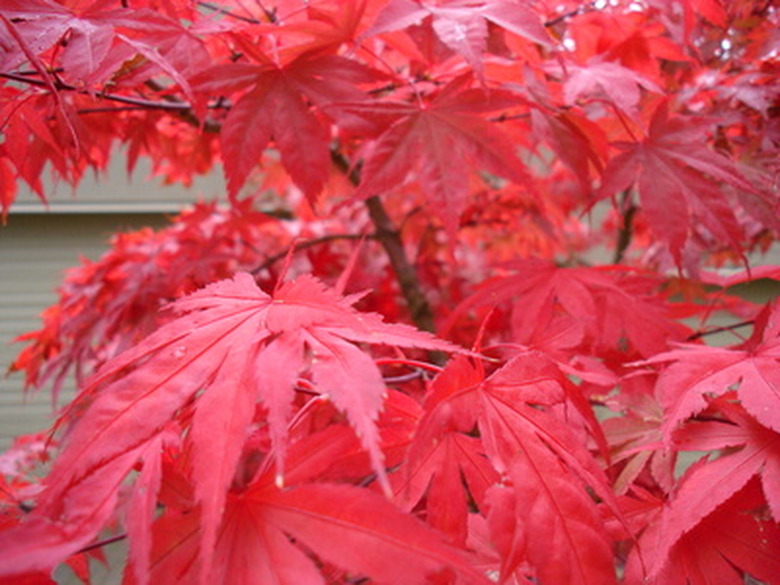Common Japanese Trees
Many Japanese trees are common in North American gardens. The trees are close relatives to similar species native to the New World, but exhibit enough different characteristics to make them stand out. Japanese trees come in sizes to fit small and large landscaping plans alike.
Japanese Maple
Japanese maple (Acer palmatum) is hardy in USDA Zones 6 to 8. The tree has a round crown and thin twigs and grows from 15 to 20 feet tall. Palm-shaped leaves measure 2 to 5 inches long and the same in width with from 5 to 11 lance-shaped lobes. The leaves turn scarlet, yellow or orange in the fall. Plant Japanese maple in full sun in the north, full shade in the south and partial or dappled shade in between. The tree needs a moist, well- drained soil.
- Many Japanese trees are common in North American gardens.
- The trees are close relatives to similar species native to the New World, but exhibit enough different characteristics to make them stand out.
Asian White Birch
Asian white birch (Betula platyphylla) is a native of Japan that grows from 40 to 50 feet tall. The tree produces dark-green leaves up to 3 inches long that turn yellow in the fall. Plant Asian white birch in full sun and a soil that is moist and well drained. The tree is hardy in USDA Zones 5 to 7.
Hinoki Cypress
Hinoki cypress (Chamaecyparis obtusa) is also known as Hinoki false cypress. The tree is an evergreen that grows from 10 to 60 feet tall with a crown spread of about 20 feet. The leaves resemble scales and grow flat against the branches with each leaf over-lapping the one in front when they are mature. Young leaves do not overlap and look more like needles. The tree produces cones about ½ inch in diameter. The smaller trees are more readily available. Plant Hinoki cypress in full sun and a soil that goes dry between waterings. The tree is hardy in USDA Zones 5 to 8.
- Asian white birch (Betula platyphylla) is a native of Japan that grows from 40 to 50 feet tall.
Japanese False Cypress
Japanese false cypress (Chamaecyparis pisifera),also known as Sawara false cypress, is hardy in USDA Zones 4 to 8. The larger tree grows up to 60 feet tall and 20 feet wide, but is not readily available. The smaller version which grows as a shrub or tree from 3 to 20 feet tall is easier to find. Young leaves grow as needles, becoming overlapping and scale-like as they age. Colors range from green to yellow or gold or blue-silver. Plant Japanese false cypress in full sun or partial shade and a soil that is moist and well drained.
